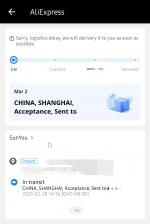Wow!
@victorstk, thank you for the video and looking forward to the voice-over! That was a quick response full of resourceful info!
It is not out of unusual seeing that the right stick had better success in calibration, as it is all about quality of magnets, their structure, components and magnetic force equality of each magnet that effects the magnetic field and data readings.
Seeing each stick off-centered out of the box on the video comfirms different precision standards of each magnet installed per each axis of these sticks. I just wonder how mine "self-contained" joysticks would work on Steam Deck...
Nevertheless, it has dawned on me that I will be inevitably facing the same issue as yours,
@victorstk, disregarding whether the joysticks would come with or without a chip and based on the concept and analysis expelled above and below:
---
Having experienced installation and callibration process of GuliKit Joystick Replacements for Steam Deck, and based on the instruction, the calibration is made as such:
The stick has be to be tilted to the opposite side of the drift and the "Set" button on the back side of the daughter board has to be pressed to center the stick evenly by X and Y axis, i.e. first - tilt to the oposite side of the drift tilting it to the same opposed value and then - press "Set" to calibrate the center position.
It is self-explanatory as for the requirement to tilt the thumbstick to the opposite side of the drift of the same opposed value, as the values will be then added or substracted from the raw uncalibrated center position values, which will result in proper calibrated center position.
I guess this is what this SPI chip and "set" button is required for - to achieve hardware callibration without requiring software calibration of the Steam Deck itself that is still accessible if you need so.
---
Other thing that has come to my mind is that this SPI chip and tilting the stick to the opposite side and then "setting" centered position callibration procedure is exactly what
@victorstk has attempted to do with the magnet - influence the magnetic field by analog method.
Simply put, the SPI chip does it on a digital raw-data level by adding or retracting opposed values from raw data of X and Y axis to make them act as reference for center position of the joystick. That seems to be doable with the callibration software of the Steam Deck and in Steam Deck's scenario, if the joysticks come without SPI chip installed, such as mines, then the Steam Deck will be the only device responsible for the reference values and callibration, but, being thankful for this previous experience, it is Nintendo Switch and Nintendo Pro Controller we are curious about in this particular thread and project.
In our case all the reference data and callibration is hardcoded into the SPI chip on the motherboard of the Pro Controller, and we have a possibility to overwrite those reference values with the Switch calibration software. Sure, we cannot see numeric/hex values in there, nor can we make any value input by ourselves other than just tilting the thumbstick on the request of the software, but we shall never forget about the wonderful external software known as Joy-Con Toolkit.
Joy-Con Toolkit has to be explored in greater detail when it comes to callibration and overwriting user-callibrated values. I am certain that this is where the solution to our issue is buried.


 )
)


